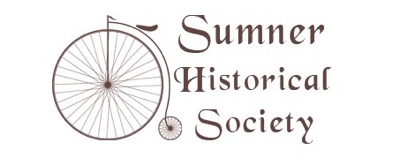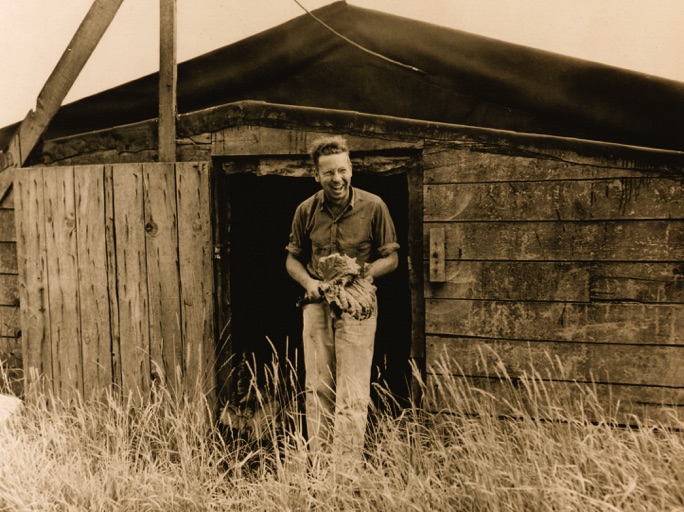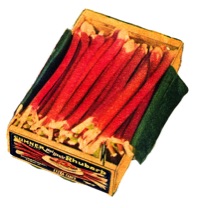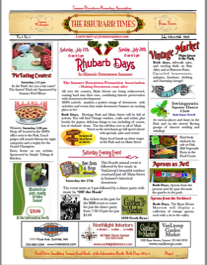

The barb was wheeled to the topping shed where ladies at a high table used machete-like knives to remove (“top”) the leaves. They also sorted the rhubarb for shipping. The barb was packed in simple wood crates, lined with green paper. What was left over, small bits and large pieces but still good rhubarb, went into a large box, soon to become pie filling.
The Rhubarb leaves stayed on the farm. They were tossed in a trailer equipped with a hydraulic lift. Mr. Ryan hitched the trailer to a tractor, the kids piled in the bed on top of the leaves and they rode out to he fields where the leaves were dumped, nutriment for the next crop.
Occasionally, he would let the kids stay in the trailer bed as he activated the hydraulics. As the bed rose, the kids held onto the front rim while the leaves slid out from under their feet. There was lots of laughter from both kids and dad! If someone let go, it was a short fall into a pile of soft leaves. Then the bed was lowered and the tractor headed back to the hot house.
After harvesting the hothouse crop, the crew went out to process “field” rhubarb. Large wooden tables were moved down the rows where the topping was done. Field rhubarb was larger and courser and thus got a lower price than hothouse.

Lewis H. Ryan in front of the Ryan Farm's rhubarb hot house, 1940s, 1950s


As told by Mary Beth Ryan
The Ryan’s rhubarb farm is gone now. It is occupied by the intersection of Hwy 410 and Valley Avenue. What remains is the memories and the photographs. They all testify to the part rhubarb plays in Sumner’s legacy. Mary Beth Ryan, is a Director Emeritus of the Sumner historical Society.

This story, "Growing up with Rhubarb" by Mary Beth Ryan, was in the "Rhubarb Times", a Rhubarb day's Publication in 2011. Mary Beth’s dad grew rhubarb, and he also planted memories. As a young girl, Mary Beth and her siblings shadowed Lewis H. Ryan as he tended to his rhubarb farm in Sumner in the ‘40’s and ‘50’s.
There are memories of workers harvesting the barb in the hot houses, pulling and stacking heaping piles of the leafy vegetable on wooden, open-sided wheelbarrows. Hot houses were warm and dark which produced a tender, and early crop.
©2023 SUMNER HISTORICAL SOCIETY
Box 1928, SUMNER WASHINGTON 98390 253-299-5780
contact@sumnermuseum.org